



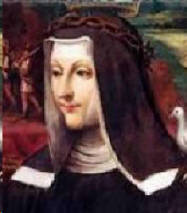
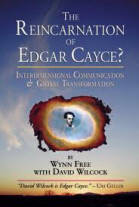
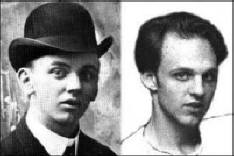
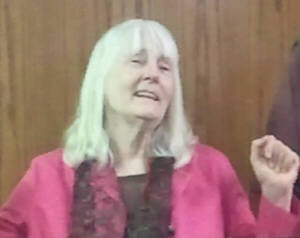

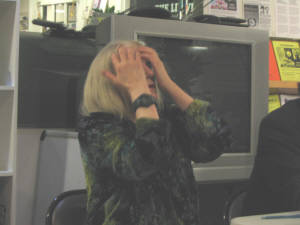
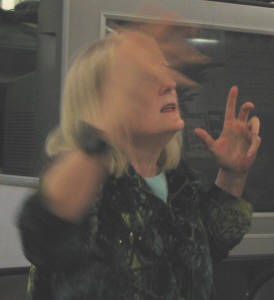
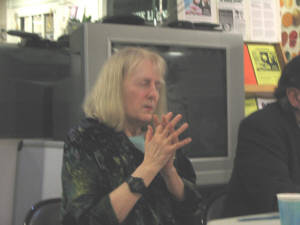

Is Terry a current incarnation of the Catholic saint - St Catherine of Siena?
One of the reoccurring themes of this work has to do with the reality of reincarnation. If that's not something you have come to a personal conviction about, I'd like you to be open to the possibility as you study these materials. I have had many personal experiences, which proved to me, without a shadow of a doubt, that reincarnation is real. And there are many far more scholarly people than myself who have come to that same conclusion. As you become familiar with the materials being presented on this website and in my books, you'll be exposed to the great plethora of evidence supporting the idea of reincarnation, with impossible improbabilities.
I learned as I was studying the reincarnational ties of David Wilcock to Edgar Cayce that most people will closely resemble their past lives, because apparently, the DNA configuration of the person is carried via the Soul from one lifetime to another and when the Soul enters the new fetus, it programs it with the previous life DNA, which accounts for the resenblance.
The cases referred to on this page did not become formed because someone looked through history books and found an individual they looked like and made a claim. In both cases, there were many tie ins that had already occurred before the case of reincarnation was considered.
In the Wilcock/Cayce situation, Wilcock was living in upstate New York and was receiving "messages" in his twilight sleep which were giving him wise counsel and sometimes prophetic predictions. His dream voice requested that he move to Virginia Beach which was the location of the Cayce Foundation. Wilcock followed their suggestion and after he moved, people would stop him and remark on the incredible similarity between himself and Cayce. There are a number of additional correspondances between Wilcock and Cayce which convinced me of the authenticity of the case, which resulted in the writing of the book with Wilcock - The Reincarnation of Edgar Cayce?
At some point, I believe in the period of 2003-2004, I was doing a session with Daphne over the telephone, and I casually asked if Terry had ever been anyone famous. They don't answer every question and never with the intent of just satisfying my curiousity, so I didn't really expect them to answer. But they did. They said to look up St. Catherine of Sienna. I never heard of St. Catherine, but I Googled her and found the story of this young woman who would visit the local church in Sienna, Italy where the priests and nuns would write down everything she said because they thought God was speaking to them through her. St Catherine's Dialogs with God is still published and available in book stores. Here's a drawing of a transcription being taken with Catherine. Looking at Catherine from a modern reference point, we might call her a channel.
At the time the connection between Terry and St. Catherine was made, I was still in an evaluation of this channeling experience I was in the middle of. Even though the intelligence that was communicating to me said they were the Council of Elohim and Elohim was one of the words for God in both the Old Testament and the Book of Mormon, my mind couldn't completely wrap around the belief that they were who they said they were. But the Terry/St Catherine connection gave Terry and I became more open to the possibility that it was real. It seemed that the manner in which the awareness for this St Catherine/Terry connection came about had to be more than just a "lucky guess" from the Sources communicating with us. And I as studied St. Catherine. I discovered many more personality correspondances between Terry and her. The pictures below are Terry channeling at a live workshop in Torrance, California
------------------------------------------------------------------------------------------------------------------------------------
---------------------------------------------------------------------------------------------------------------------------------
I close this page out with the Wickopedia story on St. Catherine:
She was born Catherine Benin in Siena, Italy, to Giacomo di Benincasa, a clothdyer, and Lapa Piagenti, possibly daughter of a local poet. Born in 1347, she was the last of 25 children. She took the habit of the Dominican Tertiaries after vigorous protests from the Tertiaries themselves.
In about 1366, St Catherine experienced what she described in her letters as a "Mystical Marriage" with Jesus. Her biographer Raymond of Capua also records that she was told by Christ to leave her withdrawn life and enter the public life of the world. Catherine dedicated much of her life to helping the ill and the poor, where she took care of them in hospitals or homes. Her early pious activities in Siena attracted a group of followers, both women and men, while they also brought her to the attention of the Dominican Order, which called her to Florence in 1374 to interrogate her for possible heresy. After this visit, in which she was deemed sufficiently orthodox, she began travelling with her followers throughout northern and central Italy advocating reform of the clergy and the launch of a new crusade and advising people that repentance and renewal could be done through "the total love for God."
Physical travel was not the only way in which Catherine made her views known. In the early 1370s, she began writing letters to men and women of her circle, increasingly widening her audience to include figures in authority as she begged for peace between the republics and principalities of Italy and for the return of the Papacy from Avignon to Rome. She carried on a long correspondence with Pope Gregory XI, also asking him to reform theclergy and the administration of the Papal States.
In June of 1376 Catherine went to Avignon herself as ambassador of Florence to make peace with the Papal States, but was unsuccessful. She also tried to convince Pope Gregory XI to return to Rome. [ 2 ] She impressed the Pope so much that he returned his administration to Rome in January, 1377. Following Gregory's death and during theWestern Schism of 1378 she was an adherent of Pope Urban VI, who summoned her to Rome, and stayed at Pope Urban VI's court and tried to convince nobles and cardinals of his legitimacy. She lived in Rome until her death in 1380. The problems of the Western Schism would trouble her until the end of her life.
St. Catherine by Tiepolo, c. 1746
St Catherine's letters are considered one of the great works of early Tuscan literature. More than 300 letters have survived. In her letters to the Pope, she often referred to him affectionately as "Papa" or "Daddy" ("Babbo" in Italian). Other correspondents include her various confessors, among themRaymond of Capua, the kings of France and Hungary, the infamous mercenary John Hawkwood, the Queen of Naples, members of the Visconti family of Milan, and numerous religious figures. Roughly one third of her letters are to women. Her other major work is "The Dialogue of Divine Providence," a dialogue between a soul who "rises up" to God and God himself, and recorded between 1377 and 1378 by members of her circle. Often assumed to be illiterate, Catherine is acknowledged by Raymond in his life of her as capable of reading both Latin and Italian, and another hagiographer, Tommaso Caffarini, claimed that she could write.
St Catherine died of a stroke in Rome, the spring of 1380, at the age of thirty-three. The people of Siena wished to have her body. A story is told of a miracle whereby they were partially successful: Knowing that they could not smuggle her whole body out of Rome, they decided to take only her head which they placed in a bag. When stopped by the Roman guards, they prayed to St Catherine to help them, confident that she would rather have her body (or at least part thereof) in Siena. When they opened the bag to show the guards, it appeared no longer to hold her head but to be full of rose petals. Once they got back to Siena they reopened the bag and her head was visible once more. Due to this story, St Catherine is often seen holding a rose. The incorruptible head and thumb were entombed in the Basilica of San Domenico, where they remain.
Saint Catherine's body is buried in the Basilica of Santa Maria sopra Minerva in Rome, which is near the Pantheon.
Saint Catherine by Carlo Dolci:
Pius II canonized St Catherine in the year 1461. Her feast day, at the time, was not included in the Roman Calendar. When it was added in 1597, it was put on the day of her death, April 29, as now, but because of a conflict with the feast of Saint Peter of Verona, which was also on April 29, it was moved in 1628 to the new date of April 30. [ 3 ] In the 1969 revision of the Roman Catholic calendar of saints, it was decided to leave the celebration of the feast of St Peter of Verona to local calendars, because he was not as well known worldwide, and Saint Catherine's feast was restored to its traditional date of April 29. [ 4 ] Some continue to use one or other of the calendars in force in the 1628-1969 period.
On 5 May 1940 Pope Pius XII named her a joint Patron Saint of Italy along with Saint Francis of Assisi. Pope Paul VI gave her the title of Doctor of the Church in 1970 along with Saint Teresa of Ávilamaking them the first women to receive this honour. In 1999, Pope John Paul II made her one of Europe's patron saints.

MENU .....Home | Zen Wisdom | Essays, Articles | More Videos | Conference Call Archives (text and audios) | The Terry/St Catherine Connection | The Edgar Cayce/David Wilcock Connection | Donations | Readings | Store | Conference Calls | Team Shift | About Wynn | Photo Gallery | Media and Press | Testimonials | Links | Contact and Help | Light Invocation